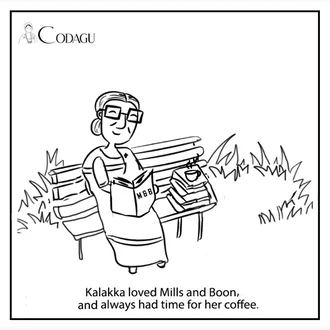The symbolic ceremony of a father handing over his daughter to another man is the biggest celebration for the family. Usually, the groom conducts his rituals near his house and the bride near hers. The groom comes to the bride's place where the “marriage” happens, and the man takes his wife back to his house. Nowadays, both ceremonies are conducted at the same place. These rituals are always performed by the family elders.
A Bojakara (best man) and Bojakarthi (best lady) are chosen. Mostly, the respective brother-in-law and sister-in-law. Alternatively, an uncle or an aunty can also fulfill the role. Their role is to make sure the bride and groom follow the rituals. The wedding has to be for a duration of at least 2 days (nowadays, most people don!!!t follow the customs). The first day is for just the close family and friends. Basically, a gathering of the family to bless the person getting married. The elders pray to the family deity and ancestors. According to customs, the first-day rituals have to be performed separately at the groom's and the bride's places.
The second day is when the “marriage” day. There will not be any person from any religious establishment presiding over the marriage at any time. In the morning the bride and groom are bathed by their elders. After this, they have to wear their “wedding dress”. A white Kupya for the groom, and a red sari with a red vasthra for the bride. The immediate family elders will be wearing black Kupyas and saris with a vasthra. A brief ceremony takes place where the elders of the family ask the ancestors to bless the couple. After this, the bride and groom meet everyone who has come to bless them. Usually, all guests give a gift. After lunch, a person (the Bojakara for the groom or any uncle), will cut 6 of the 12 banana stems erected outside the wedding place. After this, the groom!!!s guests get ready to leave towards the bride!!!s place (other than the groom!!!s parents). Upon arrival, there will be a ceremony where the groom!!!s guests are welcomed by the bride!!!s guests. And a person from the groom!!!s side (the Bojakara for the groom or any uncle) will cut the remaining 6 banana stems at the bride!!!s place.
The elders from both families bless the couple and pray to the ancestors to bless them too. The bride and groom meet all the guests. After dinner at the Puthankarthe's (the lady who just got married) place. All the guests (other than the Puthankarthe!!!s parents) leave for the Puthankara's place. Upon arrival a person (the Bojakara for the groom or any uncle), will cut the remaining 6 of the 12 banana stems at the Puthankara!!!s place. The Puthankarthe is welcomed by her in-laws and there will be a brief ceremony asking the ancestors to bless the couple. After this, the Puthankarthe has to break a coconut and carry well water (regarded as water from the Kaveri), to the Puthankara!!!s house. (A few decades back, weddings would take place at the house. Due to the preference of using a mantap, the mantap is considered as the house.) During the entire wedding, there will be a band playing the valaga (kodava music). When the Puthangarthe carries the water from the well to the house, people dance in front of her, delaying her. The Puthankarthe will have 2 companions, in front and back carrying the same water. These ladies have to be unmarried, from the in-laws family.

